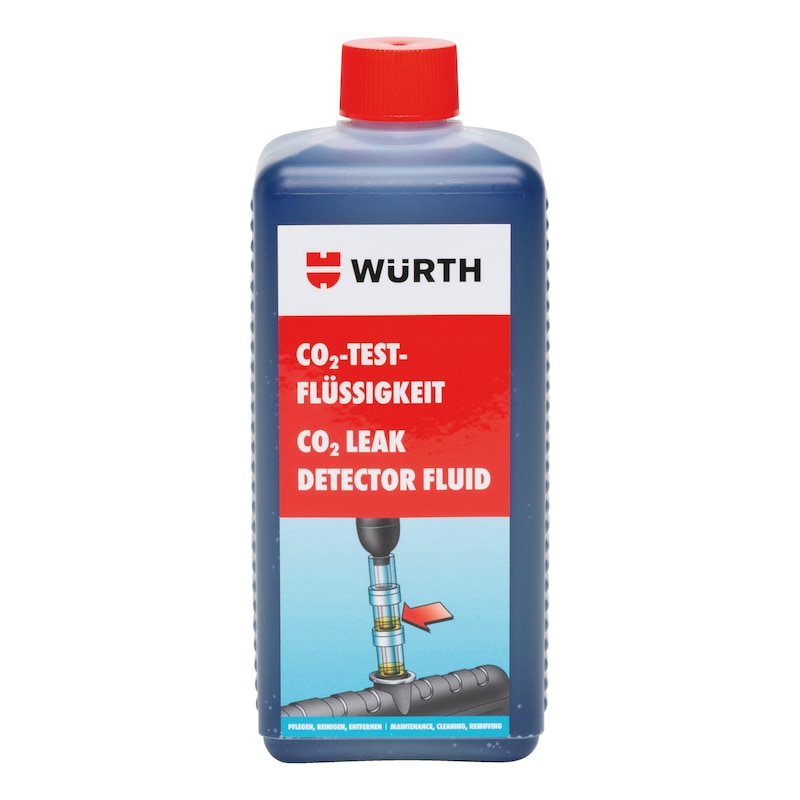For detailed information, other images and documents, please select individual articles from the following table.
Register now and access more than 15,000 products
Variants
Register now and access more than 15,000 products
Call customer service: +44 03300 555 444
Prices for customers after login
Liquid used is safe, free from acid and non-flammable
- Easily disposed of
- Environmentally sound
Important: When using the CO² leakage tester, always ensure that no coolant is drawn in. A diesel engine operates under light load with high excess air and the combustion gas contains a high proportion of unconsumed air. Therefore, place the diesel engine under as high load as possible by means of a test drive or repeatedly revving prior to performing a CO² leakage test. Organic and inorganic salts dissolved in distilled water. The total proportion of these non-toxic ingredients is only 0.03 %. Classification according to Directives 67/548/EEC and 1999/45/EC, this test fluid is classified as "non-harmful".
The usage instructions are recommendations based on the tests we have conducted and our experience; carry out your own tests before each application. Due to the large number of applications as well as storage and processing conditions, we do not assume any liability for a specific application result. Insofar as our free customer service provides technical information or acts as an advisory service, no responsibility is assumed by the provision of this service except where the advice or information given falls within the scope of our specified, contractually agreed service or the advisor was acting deliberately. We guarantee the consistent quality of our products. We reserve the right to make technical changes and further develop products.
- After the engine has overheated
- When there is a suspected leak if a pressure test (1 bar) does not produce a conclusive result
- When there is a suspected hairline crack in the cylinder head and engine block or faulty cylinder head gasket
Insert the CO² leakage tester into the cooler or expansion tank opening and by pushing the suction ball inspect the air buffer of the cooling system for increased CO² content (= combustion gas). In the middle chamber of the CO² leakage tester, a change in colour of the blue liquid to "green" and then to more of a "yellow" indicates a leak between the combustion chamber and cooling system.
For more information, please refer to the technical data sheet.
Select RAL-colour code
!! NOTE: On-screen visualisation of the colour differs from real colour shade!!



